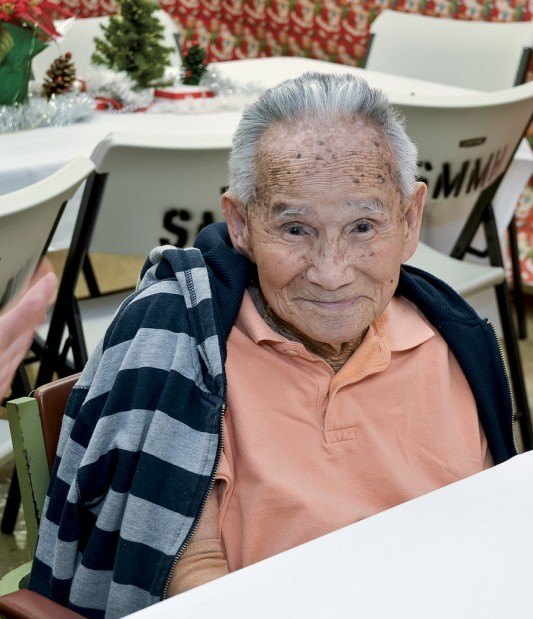KAPA‘A — Norio Furutani, 95, was not only a barefoot football player, he also was a boxer, said Betty Ihara, Wednesday. Furutani was one of the residents at the Samuel Mahelona Memorial Hospital who was celebrating Christmas at the hospital’s
KAPA‘A — Norio Furutani, 95, was not only a barefoot football player, he also was a boxer, said Betty Ihara, Wednesday.
Furutani was one of the residents at the Samuel Mahelona Memorial Hospital who was celebrating Christmas at the hospital’s annual shindig organized by Josie Pablo and Elaine Morita with the help of the community and the Mahelona Hospital Auxiliary.
“Do you know what he used to play?” Ihara, a former Kaua‘i Interscholastic Federation football official, asked, motioning with her hand behind her back. “He said he was a tailback.”
Stoop Shimogawa, another longtime KIF football official, said he thinks Furutani used to play for the Lihu‘e Ramblers during the reign of what Ihara described as “hadashi,” or barefoot football.
Pablo said Furutani’s relatives visit from O‘ahu almost weekly, and were on hand to help celebrate Christmas, although they admit it’s hard to discern what is truth, or made up from the animated former athlete who joked by putting up a fist to protect his face, boxing style.
Both Ihara and Shimogawa were at the hospital to celebrate the holiday festivities with one of their own relatives, and could not help but overflow into the nostalgic world of plantation-style football.
Charlie Fern, who went on to become the owner of The Garden Island newspaper for 44 years, is credited with starting the barefoot football league in 1927, eight years after the “barnstorming aviator” arrived in Hawai‘i with Ben Stoddard, his partner, online sources state.
The hadashi league consisted of loosely-affiliated teams from the various towns on Kaua‘i, states Lauren Morimoto in a doctorate dissertation for the Ohio State University.
Participants played football in their bare feet, in part because they rarely wore shoes, and in part because as field and cannery workers, they could not afford athletic gear.
Morimoto said while the league was open to all races, the lighter weight leagues within the 115- to 130-pound range drew more Asian Amerians.
“The other nationalities were too big for the 135-pound league,” Mamo Wakuta, a Kapa‘a resident, told Morimoto in an interview for her dissertation. “Pono Athletic Club never had Portuguese, but Hawaiian Cannery, another club, had Portuguese.”
Most of the teams came from “company” or plantation towns, centers where the sugar and pineapple plantation or canery was the primary source of labor.
This is the field from which players were drawn, Morimoto said.
Morimoto, describing herself as a “katonk,” or Mainland-born, scoured countless pages of The Garden Island and interviewed and spoke with numerous Kaua‘i residents on the subject of barefoot football, said she was reminded by Harriet Albao to stay in touch because “We’re connected, now.”
“I feel lucky because these men and women remind me that my research matters, because barefoot football mattered to them,” Morimoto said.


